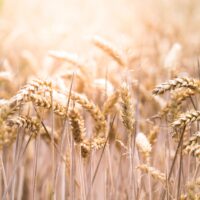Liz Beaven, Executive Director of the Alliance for Public Waldorf Education, explores the epidemic of school violence in the United States, encouraging educators to speak loudly on behalf of the wellbeing and safety of children.
In the United States, by mid-May, for many schools, the school year is almost at an end, with students and teachers anticipating a long summer break. If ever students and teachers needed a positive, happy end to the school year, this was it; after two plus years of Covid-induced disruption, teachers and school leaders were more exhausted than I have ever seen them, and children were still finding their way back to social and learning behaviors set aside during remote learning and school closures. Instead, yet another tragic, horrific school shooting exploded into everyone’s hearts, souls, and minds: nineteen children and two teachers violently killed by gunfire, families devastated, a community traumatized. There were reverberations for every parent, every child, every school, and every community. Is it safe to send my child to school? Might they be next? A happy time was swallowed by disbelief, grief, heartbreak, fear, anger, and many questions.
Colleagues from outside the US ask us to explain the many mass shootings in the United States. Explanations, whether to ourselves or to the watching world, are patently inadequate as these tragedies continue. We find ourselves unable to explain the inexplicable, the incomprehensible, or to make sense of our collective political, social, moral, and cultural inability to make changes that have proven effective in other countries. We stand alone–very alone—in numbers of gun deaths and school shootings. Gun violence has become a ghastly manifestation of ‹American exceptionalism›.

The facts are stark. More than 311,000 students have witnessed gun violence at school since the Columbine shooting in 1999. In 2021, there were 34 school shootings recorded, despite many schools still being closed or on reduced schedules due to Covid. This year to date, there have been 27 school shootings, including the most recent tragedy in Uvalde, Texas. At least 185 children’s and teachers’ lives have been lost, with another 369 injured. Every school, every child, every teacher, every parent is impacted by these stark facts. Schools have drills for active shooters, lessons in sheltering in place. Young people bear direct or indirect witness to death and injury. Trauma and fear are pervasive. They ask, Is my school safe? Will my teacher protect me? Parents ask: Should I even send my child to school?
Like most negative issues in this country, we see a disproportionate impact on students of color. They have suffered more from school violence and typically have less access to resources and care in its aftermath. This most recent school shooting occurred just days after a shooting of elderly Black citizens in Buffalo, NY. The wounds are deep and pervasive.
In the wake of this latest tragedy, it is time to reexamine, challenge, and reframe common responses, repeatedly uttered in the wake of unspeakable horrors. Typical responses to these tragedies include cliches, misleading claims, and deliberate lies.
Each needs to be squarely challenged.
This is not a time for politics. Our thoughts and prayers are with the victims and their families. We know that thoughts and prayers have great power and reality. We must not abandon these actions: those who are killed through violence need our loving, warm support in the time after death. However, we also know that our threefold nature includes the necessity of engaging our wills and acting. This is a deeply political issue as it involves the fundamental well-being of our society. We need to speak out on behalf of our children.
We must harden schools. This dreadful statement suggests that schools should become impenetrable fortresses. For many young people, schools are already hard and harsh. Schools should be hubs of healthy communities, warm, inviting, aesthetic, and connected to nature, places where young people can healthfully grow and where community can flourish.
Restrict access to schools – one door only, armed and guarded. This is part of hardening schools and deserves the same response. Schools need to breathe, to be humming with life, and people need to come and go as part of that life force.
We must arm and train teachers. People choose to be teachers out of their connection to children, and their desire to teach, guide, and mentor the next generation. The idea of firearm training as part of teacher preparation and a gun in every classroom is truly horrifying and frightening. Schools and teachers do indeed need to be better armed – not with guns, but with resources, personnel, services, appreciation, and support.
Teachers and school personnel are in some way to blame. In Uvalde, there was a question of a door left propped open, providing access to the gunman, and suggesting that a teacher who propped a door open was a cause of the violence. This has since been disproved, but the suggestion of blame was immediate. Teachers are expected to be doctors, counselors, social workers, and protectors. We ask too much of them. This epidemic of gun violence is not the fault of teachers. Two teachers gave their lives protecting their students.
Have more lock-down drills, starting in kindergarten or earlier. Play and imitation are the rightful activities of young children. Imagination and a rich feeling life are the rightful domains of the grade school child. Explorations of truth and critical thought are the right of our teenagers. Active shooter drills, while currently a tragic necessity, teach our children to fear and to imagine losing their own lives simply by going to school.
This is a mental health problem, not a gun problem. This is often accompanied by the simplistic claim that Guns don’t kill people, people kill people. Given the statistical American exceptionalism cited earlier, this is not worthy of comment except to say that there is indeed a mental health crisis among our young people and more and appropriate resources, personnel, and support are urgently needed and would be gratefully received by schools.
What of the shooter? Can we begin to grapple with what would drive a young person to purchase two automatic rifles right after reaching the age where this was possible—a mere 18 years in Texas—to shoot his grandmother, then massacre innocent children and teachers? Can we find the compassion to attempt to understand this? There are many signs that all is not well with many of our young people. If we can attempt to understand this, might we be able to find our way to meaningful support for them and to change a frightening increase in violence against self or other? In a time of polarization, division, and fear of the other, heightened or illuminated in recent years, can we find the strength to search for underlying causes and to establish responsibility for them?
Writing as a long-time Waldorf educator, my thoughts have returned to the original impulse of Waldorf education. In 1919, at a time of great social and political upheaval in the wake of World War I and with a pandemic still raging, Rudolf Steiner stated that, if we want a better future for our children, we need a different education, one based on the developmental reality of childhood and an understanding of the true nature of the human being. Waldorf schools grew out of his insight and action. One hundred years later, those of us who have dedicated our careers as educators to a Waldorf approach, to providing a better, more enriched, developmentally appropriate way to educate children, must find our allies. We are not alone. We must get visible and loud on behalf of our young people, our promise, and our future. They need this, and they deserve nothing less.
We know that love is the antidote and the cure. Education is the best promise for the future. Protection of children and of the nature of childhood is the responsibility of adults. As we struggle with this crisis of violence, it helps to remember that we do not do so alone: we are strengthened in our resolve by asking for help, support, and guidance through prayer and meditation. In February 2020, Virginia Sease, a citizen of the United States and a leader of the Anthroposophical Society worldwide, sent an important reminder as part of a letter to members of the US Society:
I would like to suggest that members and friends who are concerned about the destiny of America at this time, direct the thoughts which are within this Verse, especially to the beings of the Third Hierarchy who may then be able to form this meditative effort into a positive direction. This Verse is actually both a meditation and a prayer.
A Verse for America
May our feeling penetrate into the center of our heart,
Given by Rudolf Steiner to Ralph Courtney, 1923
And seek, in love,
To unite itself with the human beings seeking the same goal,
And with Spirit Beings who—bearing grace,
Strengthening us from realms of light
And illuminating our love–
Are gazing down upon our earnest, heartfelt striving.
May we also dedicate these words to the nineteen children, aged 9, 10, and 11, and two teachers whose lives were taken on May 24, 2022, in Uvalde, Texas. May we imagine and work for a safer, better future for all our children.













